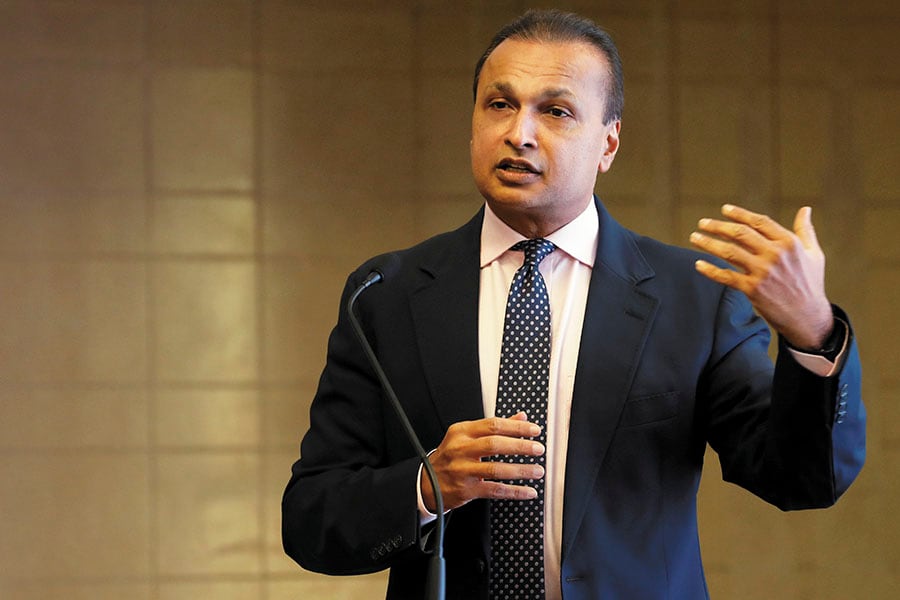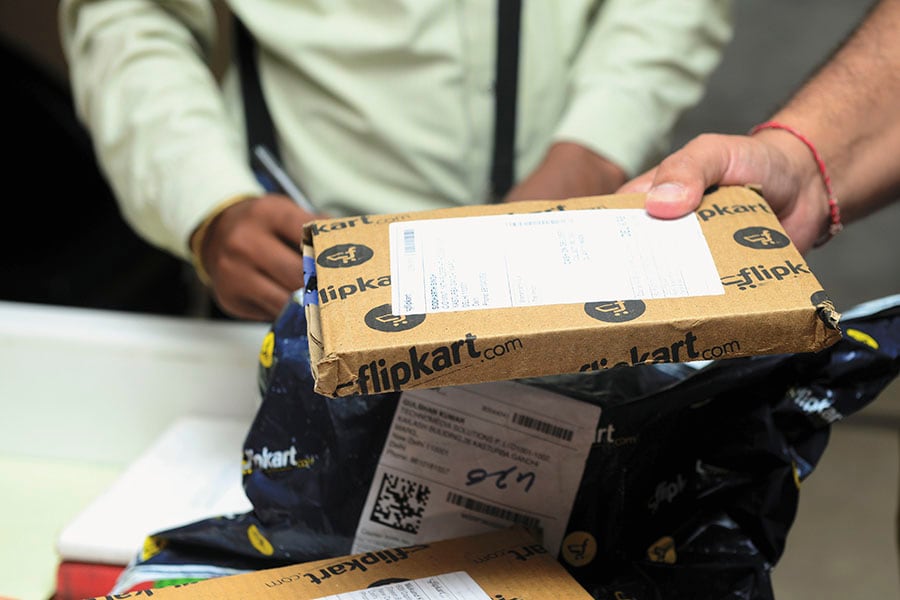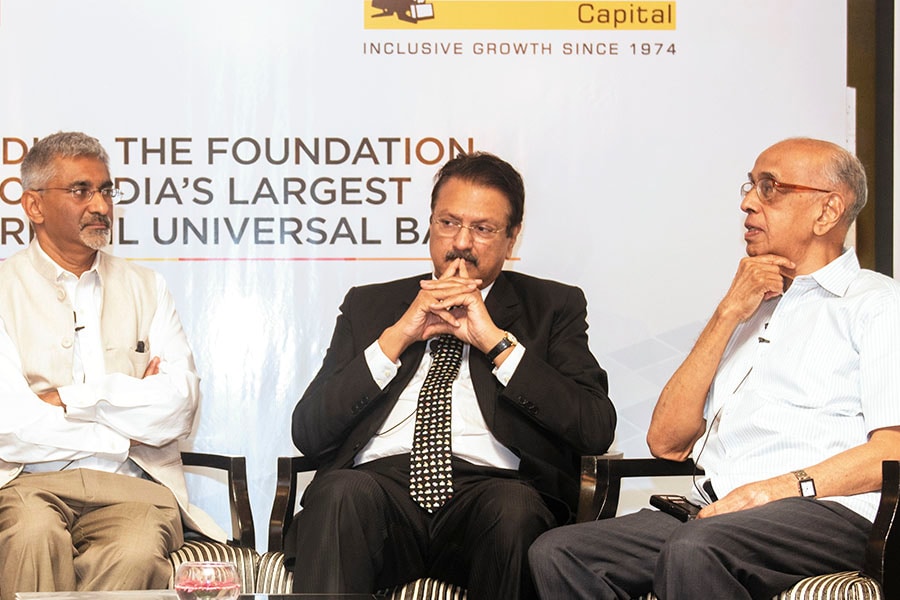2017: When marquee deals fell apart
For many businesses that pinned their hopes on lucrative M&A deals, 2017 was the year of fizzled dreams. Here are some of the prominent ones that fell through and the way forward for these companies


 Jio has agreed to buy Anil Ambani-led RCom’s wireless assets
Jio has agreed to buy Anil Ambani-led RCom’s wireless assets
Image: Danish Siddiqui / Reuters
RCom-MaxisSell, Reduce, Rebuild
The proposed merger with Aircel that fell through threatened RCom’s existence, but promoter Anil Ambani is still trying to put a stitch in the nick of time
Over the last seven years, Reliance Communications (RCom), the mobile telephony arm of the Anil Ambani-led Reliance Group, has been trying to reduce leverage by monetising some of its assets. With
its financial health deteriorating rapidly, RCom finally appeared to have found a solution to its woes in 2017. The first stage of the restructuring plan was to hive off its wireless communications business and amalgamate it with that of competitor Aircel, promoted by Malaysia’s Maxis Communications. But the deal was called off in October.
Deal Size
An RCom-Aircel combined entity would have been India’s fourth largest telco by subscriber base and revenue market share and the second largest by spectrum portfolio. The merged entity would have had assets worth ₹65,000 crore and a net worth of ₹35,000 crore. A union between the telcos would also have paved the way for the planned sale of RCom’s telecom towers business, Reliance Infratel, to Brookfield Asset Management for ₹11,000 crore.
What went wrong?
RCom and Aircel had signed binding agreements in September 2016 for the transaction, but “legal and regulatory uncertainties, and various interventions by vested interests…caused inordinate delays in receipt of relevant approvals for the proposed transaction,” RCom said in October, after the deal was called off.
Essentially, a slew of cases filed against the company by creditors, including insolvency petitions by the China Development Bank (CDB) and telecom equipment maker Ericsson, bound RCom in a legal tangle and the proposed merger became difficult to implement.
With the RCom-Aircel merger off the table, the transaction with Brookfield also fell through, since the failure of the former deal impacted the valuation at which Brookfield had agreed to invest.
The Road Ahead
In the last week of December, RCom tried to pull another rabbit out of the hat. If the revised plans for easing leverage materialise, Reliance Group Chairman Anil Ambani may still save his company from being taken over by the lenders in the nick of time.
A joint lenders’ forum has been trying to work out a strategic debt restructuring (SDR) scheme for RCom since June 2017. As part of the plan, the company had time till December 28, 2017, to resolve the crisis, failing which the lenders planned to convert their debt into equity.
On December 26, RCom announced that it had been working closely with the lenders and SBI Capital Markets, the merchant banker appointed by the lenders to run a competitive process to monetise assets. The assets RCom is looking to monetise include 122.4 MHz of 4G spectrum, 43,000 telecom towers, 248 media convergence nodes, 1.78 lakh km of optic fibre cables and real estate. The company said it has received binding bids for all the assets and that the monetisation would lead to the debt burden coming down by ₹25,000 crore.
On December 28, RCom announced that Reliance Jio was the entity that had acquired all the assets—spectrum, towers and media convergence nodes.
Furthermore, around 125 acres of real estate that RCom owns at the Dhirubhai Ambani Knowledge City in Navi Mumbai will be developed by a special purpose vehicle (SPV) which will be owned by the lenders. This SPV will take over another ₹10,000 crore of debt from RCom.
“Multiple times in the past, RCom has announced several deals to monetise its assets, which have floundered at the eleventh hour,” says Arun Kejriwal, director of Kejriwal Research and Investment Services. “One needs to get into the fine print of the current deal with tangible details before concluding that all is well for the company.”
Jayanth Kolla, partner at Convergence Catalyst, a telecom and internet consulting firm, says if RCom manages to complete the transactions as planned, it may finally end the financial stress the company has faced over the years. Repayment of the debt is also expected to lead to CDB dropping its insolvency suit.
RCom is shutting down its business-to-consumer telecom business that comprises 2G, 3G and 4G voice and data services. It will now assume a business-to-business avatar comprising enterprise operations in India and abroad, internet data centres and a global submarine cable network. After cleaning the company’s balance sheet, Ambani intends to sell a part of his stake in the company and utilise the proceeds to further pare debt.
Though the new RCom will hardly match up to its previous size and scale, it is expected to be a company with better financials and growth prospects, according to an RCom executive. The enterprise business has a turnover of around ₹6,000 crore and an Ebitda (earnings before interest, tax, depreciation and amortisation) of close to ₹1,600 crore, he adds.
“It is a much simpler business that follows the bill-and-keep model and enjoys annuity income,” the RCom official says. “There are no charges on account of things like CUG (closed user group), IUC (interconnect usage charges) and SUC (spectrum usage charges) in this business.”
RCom said in its statement that the business-to-business venture was “stable, capital-light” and had “sustained and predictable annuity revenues and profits, with immense growth potential amidst relatively low competitive intensity”. At a press conference in Mumbai on December 26, Ambani said the new RCom was likely to be valued at ₹15,000 crore.
Kolla says RCom’s residual enterprise business may not be as lucrative by itself, and that the company may need to devise specialised products and services for clients, in addition to the bandwidth on offer. “The undersea cable network was one of the first assets to be put on the block by RCom, but it didn’t generate much investor interest since there is excess capacity of bandwidth when it comes to connectivity through and from India,” says Kolla. “RCom will need to devise products that combine bandwidth along with enterprise applications such as those meant for telepresence and secure communications.”
Partnering with RCom in its residual enterprise businesses may also be a strategic fit for Jio, Kolla says.
“While Jio has been focussed on building a robust retail franchise, its enterprise push hasn’t been
that strong. Partnering with RCom may open up a completely new business vertical for Jio, which it may not have the bandwidth to build from scratch.”
RCom’s latest effort to monetise assets and repay debt appears to have enthused investors, as reflected in the company’s share price. The company’s stock price doubled on BSE between December 19 (a week prior to the announcement) and December 27 to ₹26.93 per share.
(Reliance Industries owns Network 18, the publisher of Forbes India)
—Aveek Datta
******
 Image: Ramesh Pathania / Mint Via Getty Images
Image: Ramesh Pathania / Mint Via Getty Images
Flipkart-Snapdeal
Remove from Cart
Flipkart’s $850 million offer was rejected by Snapdeal’s founders
After seven months of tumultuous negotiations, Jasper Infotech called off the proposed sale of its online marketplace Snapdeal to bigger rival Flipkart in August last year. The merger talks were initiated by Snapdeal’s largest investor SoftBank.
Deal Size
Led by SoftBank, Flipkart had extended a $850 million (around ₹5,445 crore) offer to Snapdeal. Had founders Kunal Bahl and Rohit Bansal extended a hand, it would have been the biggest ever M&A deal in Indian ecommerce.
What Went Wrong?
The negotiations between the two Indian ecommerce players ended as Bahl and Bansal as well as Snapdeal’s minority shareholders were opposed to the terms of the sale, including the valuation of their company.
The Road Ahead
A recent Morgan Stanley report states that just 60 million of India’s 432 million internet users are online shoppers. Hence, only the surface of online retail has been scratched in India.
Given the growth potential of the market, K Ganesh, a partner at the entrepreneurship platform GrowthStory, says there is room for multiple ecommerce players in India. “It’s not a winner takes it all [scenario].” That said, with much emphasis, Ganesh adds: “You need to be able to access capital to change consumer behaviour, to do promotions, offer discounts, and all that stuff.”
For Snapdeal, capital seems to be its Achilles heel. The company’s founders have been working on a ‘Snapdeal 2.0’ strategy, which includes streamlining costs and selling assets. In July, Snapdeal sold its payments wallet entity Freecharge to Axis Bank for ₹385 crore, which it had acquired in 2015 for about ₹2,400 crore. The New Delhi-based e-tailer is said to have let go of over 500 employees.
“Today, Snapdeal is absolutely quiet. It will be hard for anybody to imagine that it can stage a comeback and give a fight to Flipkart and Amazon [India],” says Harminder Sahni, founder and MD of retail consultancy firm Wazir Advisors.
As for Flipkart, it had a stellar 2017, having raised close to $4 billion from the likes of SoftBank, Tencent Holdings, eBay and Microsoft Corp, giving it the much-needed ammunition to take on Amazon India. “It [Flipkart] is well funded and well managed now than before,” says Sahni.
Besides, more than just being a plain vanilla ecommerce retailer, Flipkart is now a sum of its many parts—fashion portals Myntra and Jabong, fintech business PhonePe, and the recently acquired eBay.in. So, the way forward for Flipkart “is more interesting than Snapdeal”, believes Sahni.
But Ganesh says it’s too early to write off Snapdeal. “All said and done, Snapdeal started from zero. Its founders pivoted the business many times and scaled well—forget what the valuation went up to ($6.5 billion in February 2016) and what it came down to. They [Bahl and Bansal] are terrific entrepreneurs,” adds Ganesh.
—Anshul Dhamija
******  (From left) Rajiv Lall, Ajay Piramal and R Thyagarajan at the announcement of the mergerIDFC-Shriram
(From left) Rajiv Lall, Ajay Piramal and R Thyagarajan at the announcement of the mergerIDFC-Shriram
Bottlenecks, One Too Many
The proposed IDFC-Shriram group merger was too complex to handle
In july 2017, the IDFC and
Shriram groups decided to explore opportunities for a merger, aimed at creating a financial conglomerate with a ‘mass retail bank’ at the centre of operations under the flagship IDFC Limited. Despite three months of negotiations, the plans did not materialise due to many bottlenecks, and were terminated in October.
Deal Size
The merged financial services entity would have had a loan book of $22.38 billion and expanded IDFC Bank’s retail footprint across India. For the Shriram Group, it would have meant cutting the cost of funding for the group companies. Also, Shriram Transport Finance Company (STFC) and Shriram City Union Finance would have been able to cross-sell IDFC Bank-related products.
What went wrong?
Though the promoters of all the parties—Rajiv Lall, founder managing director and CEO of IDFC Bank Ajay Piramal, chairman of the Piramal and Shriram Groups, and Shriram Group founder R Thyagarajan—sounded upbeat, analysts were sceptical.
The deal was complex, the protection of minority shareholders was being questioned and it required the approval of Sebi, RBI and insurance watchdog Irdai.
Valuations, too, were a concern, since it was feared that IDFC and IDFC Bank would suffer a dilution in the merger. STFC shareholders felt they would be impacted by a ‘holding company discount’ which meant that the holding company’s market capitalisation is less than the sum of investments it holds.
The Road Ahead
Thyagarajan said his group would try to start talks with IDFC again, but as of now there has been little headway. The deal not going through impacts IDFC Group the most, as it hurts IDFC Bank’s retail expansion plans. The bank’s stock continues to drag lower.
The deal not going through will help Ajay Piramal decide what he wishes to do with his Shriram investments.
- Salil Panchal
First Published: Jan 04, 2018, 08:27
Subscribe Now